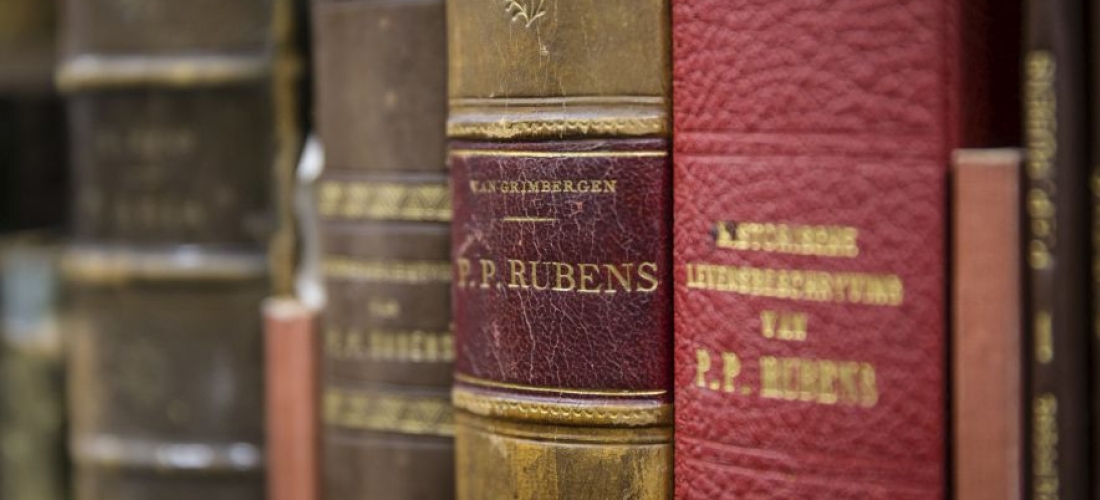Rubens was one of the first Flemish masters who engaged with reproducibility to distribute his oeuvre to a broader audience. After his death, reproductions of his work gradually multiplied, as did the (private) initiatives to collect and publish his oeuvre in print. But it is not until 1877, that the number of reproductions grew exponentially. The festivities organized for his 300th birthday celebration had a significant impact on the quantitative expansion of reproductions, coinciding with a shift from graphic to photographic reproduction techniques. The 1877 Rubens Year also initiated the scientific study of Rubens in Belgium with Max Rooses as a key figure. Rooses not only compiled the first illustrated oeuvre catalog on the artist in the following years (1886-1892), but also led the publicly funded ‘Committee to collect Rubens’ works in engraved and photographic reproduction’ (1880-1910). Both initiatives resonate with Ludwig Burchard’s creation of an extensive Rubens documentation, which since 1963 formed the basis of the collection of the Rubenianum (Research institute on Flemish art of the sixteenth and seventeenth century) in Antwerp. It is clear that the impact of mechanical reproducibility for the Rubens scholarship – and its ongoing efforts to encompass the vastness of his oeuvre – cannot be underestimated. The imagined site for such sum total of the artist’s production has always been the Rubens House in Antwerp. Already in 1877, photographer Joseph Maes envisioned a photographic encyclopedia of Rubens’ works to be exhibited in the artist’s former house, as if mechanical reproducibility would allow Rubens’ images to travel back to their point of origin, Rubens’ studio.
In 2024 the Rubenianum is moving its rich collection, joining the Rubens House’s new reception and experience center. With the fusion of the Rubenianum and the Rubens House in a single building, notably on the location where Rubens once kept his own library, Rubens’ pictorial universe thus finally comes home. Meanwhile the institution is in full transition, shelves are being emptied and boxes are piling up. But what exactly are we packing? What is the value of the thousands of reproductions in the form of prints, photographs, and slides in various formats that have accumulated in the archive over the years? Can the seemingly endless sequence of books on Rubens and his contemporaries still tell us something new? And what space will these objects occupy in the future? These and many other questions are the incentive for this conference, which will include a keynote lecture by Joseph Imorde (University of Siegen, Weissensee School of Art and Design Berlin) focusing on late nineteenth and early twentieth century mechanical reproductions and a film program introduced by Steven Jacobs (Ghent University, University of Antwerp) with art films on Rubens from the mid-twentieth century to the present.
Topics of interest include, but are not limited to:
- Formal and material distinctions between original and reproduction or between different reproduction media: graphic vs photographic, color vs monochrome, still vs moving representations; how technological innovations trigger ontological considerations on truth and integrity, accuracy and objectivity, value and authorship.
- Reproductions as heuristic tools or art historiographical instruments: functions and uses of reproductions in image archives and research centers; personal photo-archives of art historians; Can these collections shape new art historical research questions today?
- Methodological considerations on the collection and documentation of oeuvres, especially in regard to conservation (and digitization), display and dissemination.
- The circulation and popularization of artworks through art books, film, television, internet or immersive and VR exhibitions: typologies, visual strategies and their impact on the prevailing discourses.
- The agency of photographers, camera operators, authors, publishers, graphic designers, web designers, directors, curators, and other actors in the creation of meaning through mechanical reproductions.
Interested contributors are invited to send an abstract (max. 300 words) for a 20 min. paper or 10 min. object-in-focus presentation, along with a short biography in the same document. Proposals should be sent to Griet Bonne (griet.bonne@ugent.be) by 13 November 2022. Applicants will be notified by the end of November.
Scientific Committee: Nils Büttner (Staatlichen Akademie der Bildenden Künste, Stuttgart), Steven Jacobs (Ghent University, University of Antwerp), Koenraad Jonckheere (Ghent University), Elizabeth Mcgrath (University of London, Warburg Institute), Abigail Newman (University of Antwerp, Rubenianum), Lieneke Nijkamp (Rubenianum), Bert Watteeuw (Rubenianum, Rubens House)
This symposium is made possible with support from the Rubenianum, Ghent University and De Cinema.

